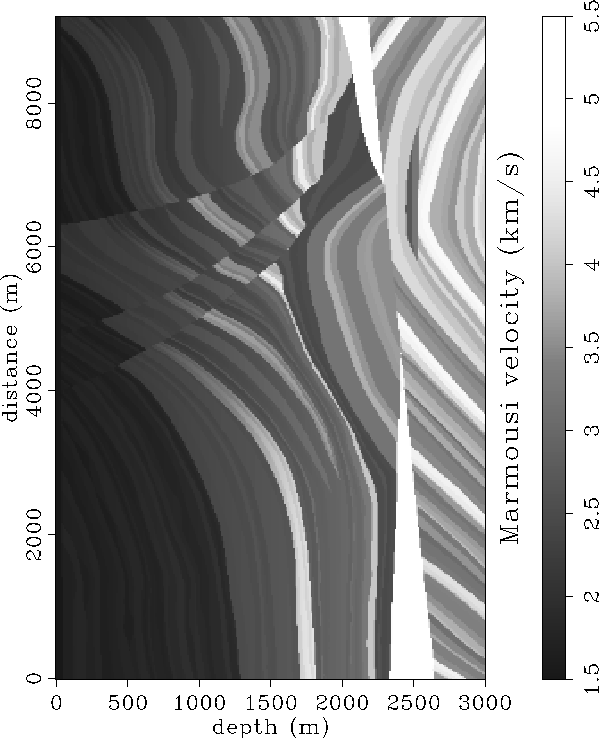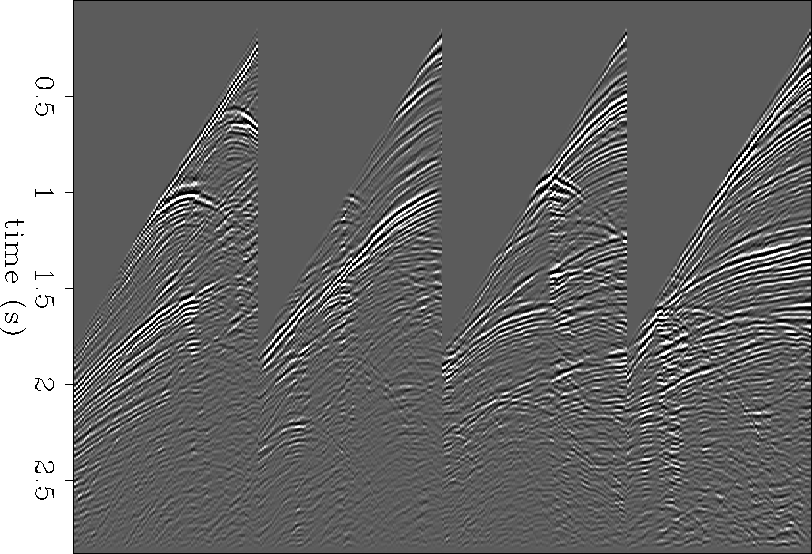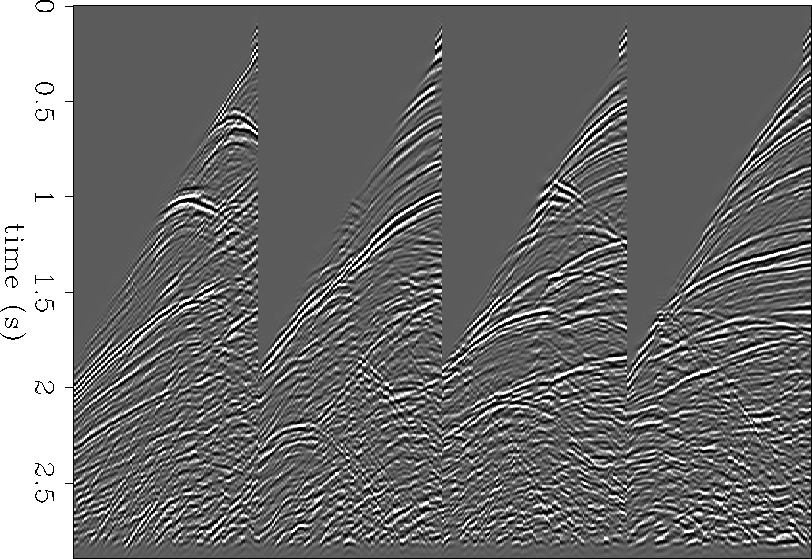




Next: First-arrival traveltimes in complex
Up: Kirchhoff imaging of complex
Previous: Kirchhoff imaging of complex
The Marmousi synthetic data set (Bourgeois et al., 1991)
was first released as a blind test for velocity estimation, but
when the velocity model was revealed, it was discovered
that many migration algorithms failed, so it has become a
popular testbed for migration algorithms.
It is a complex acoustic 2-D data set based on the geology
of the Cuanza basin in Angola. The velocity model is
shown in Figure ![[*]](http://sepwww.stanford.edu/latex2html/cross_ref_motif.gif) .
Its structural style is dominated
by growth faults which arise from salt creep and give rise to the
complicated velocity structure in the upper part of the model.
The main imaging objective is the reservoir in the
anticlinal structure below the salt.
.
Its structural style is dominated
by growth faults which arise from salt creep and give rise to the
complicated velocity structure in the upper part of the model.
The main imaging objective is the reservoir in the
anticlinal structure below the salt.
The synthetic data set consists of 240 shots with 96 gathers each.
The representative shot gathers in Figure ![[*]](http://sepwww.stanford.edu/latex2html/cross_ref_motif.gif) display complicated nonhyperbolic moveout, clearly indicating
that this is a depth-imaging problem.
Zero-phase source deconvolution was applied to the data
used in this study as part of the preprocessing (Barut et al., 1991).
The same four representative shot gathers are displayed after
preprocessing in Figure
display complicated nonhyperbolic moveout, clearly indicating
that this is a depth-imaging problem.
Zero-phase source deconvolution was applied to the data
used in this study as part of the preprocessing (Barut et al., 1991).
The same four representative shot gathers are displayed after
preprocessing in Figure ![[*]](http://sepwww.stanford.edu/latex2html/cross_ref_motif.gif) .
.
velfig
Figure 1 The Marmousi velocity model.




 marmshts
marmshts
Figure 2 Shot gathers from the Marmousi synthetic data set.
Some representative shot gathers from the Marmousi synthetic data set.




 preshts
preshts
Figure 3 Shot gathers after processing.
Representative shot gathers from the Marmousi synthetic
data set after preprocessing. Movie.
![[*]](http://sepwww.stanford.edu/latex2html/movie.gif)










Next: First-arrival traveltimes in complex
Up: Kirchhoff imaging of complex
Previous: Kirchhoff imaging of complex
Stanford Exploration Project
2/12/2001
![[*]](http://sepwww.stanford.edu/latex2html/cross_ref_motif.gif) .
Its structural style is dominated
by growth faults which arise from salt creep and give rise to the
complicated velocity structure in the upper part of the model.
The main imaging objective is the reservoir in the
anticlinal structure below the salt.
.
Its structural style is dominated
by growth faults which arise from salt creep and give rise to the
complicated velocity structure in the upper part of the model.
The main imaging objective is the reservoir in the
anticlinal structure below the salt.



![[*]](http://sepwww.stanford.edu/latex2html/movie.gif)